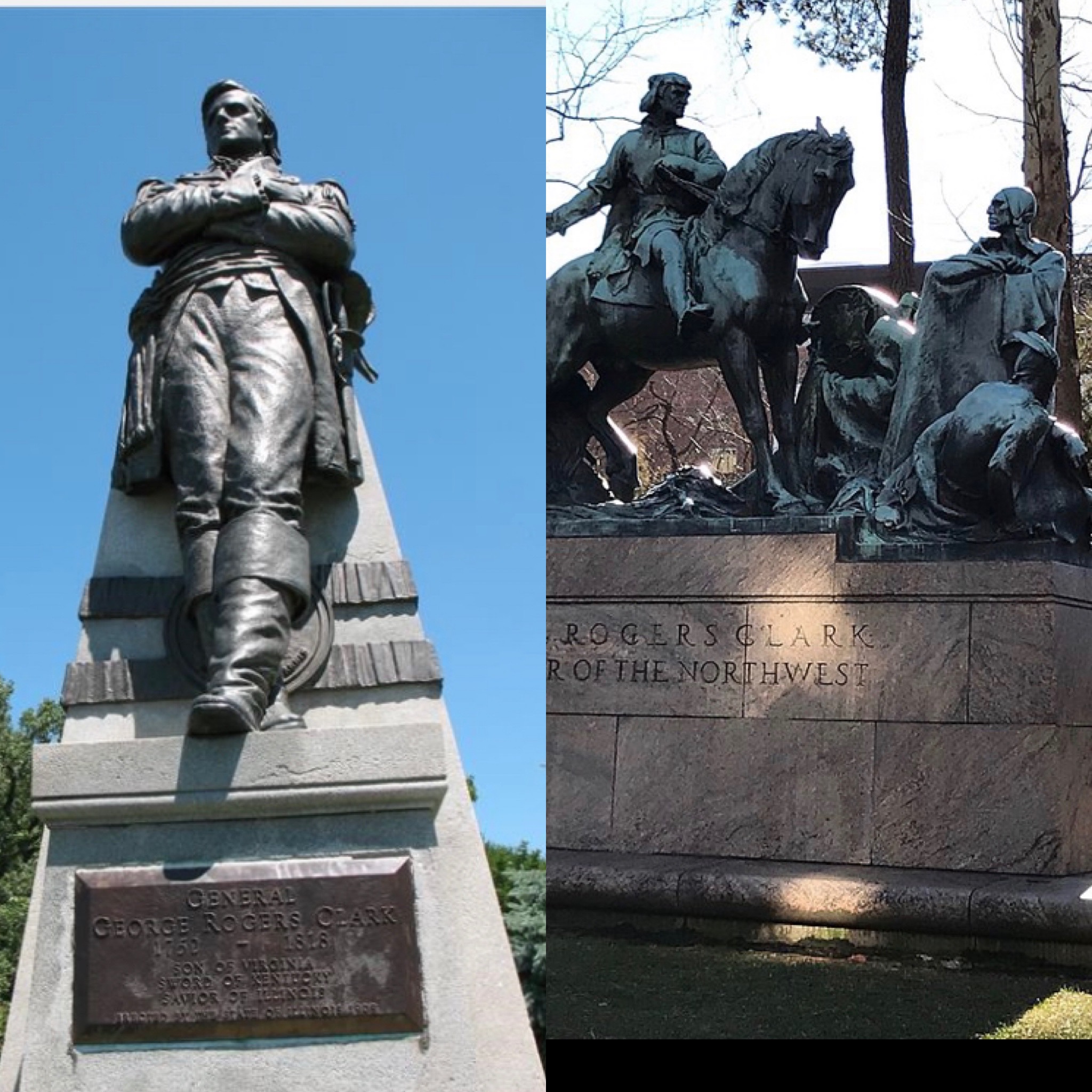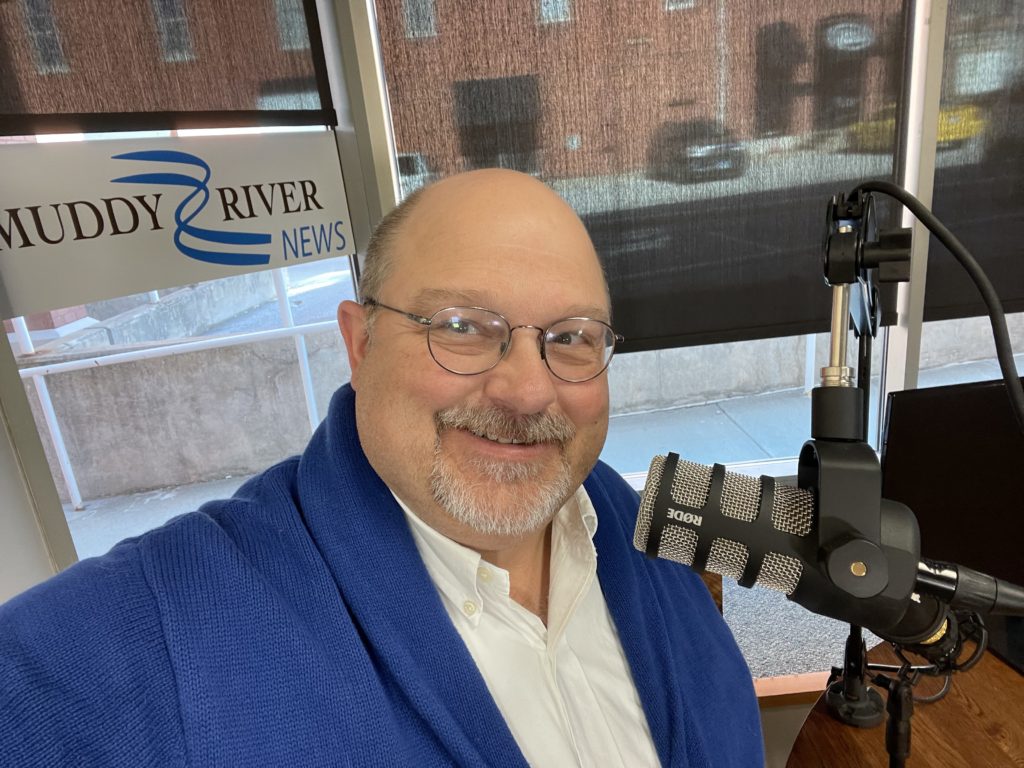While Quincy looks to fix its George Rogers Clark statue, Charlottesville has other ideas

The overlook of Quincy Bay from Ben Bumbry Riverview Park is spectacular.
When I was president of the Quincy Park Board, I thought it was appropriate to honor Bumbry when he died in 2018. He is still the city’s only African-American Park Board member, and he was the first African-American alderman. (Jason Finney, an African-American, resigned from the City Council last month.) Adding Bumbry’s name to Riverview Park was what we came up with. It was fitting, and I was proud of what was done.
Some of the pushback I got when I suggested this surprised me, but I guess it shouldn’t have. Most of it was disguised as political, since Bumbry was a Democrat when he served on the Quincy City Council. Anyone who knew him — long-time educator, musician, community leader and a heck of an athlete back in the day — knew he really wasn’t a political guy at all.
Of course, I’m not going to say my suggestion met resistance because Bumbry was Black…
At Wednesday night’s Quincy Park Board meeting, Dr. George Crickard of the Historical Society of Quincy and Adams County made a noble gesture on that group’s behalf to pay for needed repairs to the George Rogers Clark statue that sits at the point of the bluff. The Historical Society is looking to raise the funds, which could run as much as $7,000. Park Board member John Frankenhoff expressed his support for the Park District to make other repairs to the base of the statue.
Park Board President Roger Leenerts was sensitive to what could transpire, saying he was looking to avoid “controversy.” Leenerts obviously was aware of what had happened in Charlottesville, Va., this past weekend. Another statue of Clark came down Sunday on the campus of the University of Virginia.
Clark, a Revolutionary War general from Kentucky, led the nation’s expansion through Indiana and Illinois to the Mississippi River. He was the brother of William Clark, who with Meriwether Lewis led the famed Westward exploration of the Lewis and Clark Expedition of 1804-06.
From Daily Progress: The removal of the George Rogers Clark statue at the University of Virginia on Sunday was for some a symbolic first step toward repairing the harm the monument represented over the course of its 100-year history.
Workers strapped and adjusted the statue for about two hours before it was removed from its base, loaded onto a flatbed truck and taken to an undisclosed location.
Erected in 1921, the statue depicts Clark on a horse, attacking a Native American family while backed by three frontiersmen wielding rifle, pistol and powder. It was paid for by Paul Goodloe McIntire, who also commissioned the three statues that were removed by the city of Charlottesville on Saturday — those of Confederate Gens. Robert E. Lee and Thomas “Stonewall” Jackson and one of Meriwether Lewis, William Clark and Sacagawea.
Zac Russell, a UVa undergraduate and citizen of the Cherokee Nation, said the George Rogers Clark statue almost deterred him from attending the university. To Russell, the statue symbolized a celebration of genocide of Native people.
“To see it removed, I’m just filled with joy,” he said. “That statue over the last 100 years has caused a lot of pain, so I’m glad to see that the statue can no longer cause pain.”
The HSQAC has a different view, discussed here in a column by Quincy native Steve Schneider.
“Clark’s significance in history, specifically his 1770s conquest of the Illinois country, has been heralded by biographers for winning the land between the Appalachian Mountains and the Mississippi River in the Paris Peace Treaty of 1783. Other historians have more accurately judged Clark’s contributions toward a Mississippi River border as supplemental to the diplomatic negotiations between Great Britain’s Lord Shelburne and the United States’ team of John Adams, Benjamin Franklin and John Jay, and to the directions provided by the Continental Congress, specifically James Madison.
Regardless of which analysis one accepts, Quincy’s statue of George Rogers Clark serves as a beautiful symbol of his important service during the American Revolutionary War.”
PUBLISHER’S NOTE: For a complete history of the statue’s conception and dedication, see “The View From Here: The Story of the George Rogers Clark Statue in Quincy, IL” by Steve Schneider, Journal of the Illinois State Historical Society, Volume 100, No. 4, Winter 2007-08.
Looking at the two statues side-by-side, the Quincy statue is pretty tame. Clark is merely surveying the Mississippi River below. He’s not riding into battle against Native Americans, with troops behind him, guns drawn.
Clark apparently also like his whiskey, but so do I and so did General Grant and President Lincoln didn’t give a damn about that:
“After the failure of his first experimental explorations around Vicksburg, a committee of abolition war managers waited upon the President and demanded the General’s removal, on the false charge that he was a whiskey drinker, and little better than a common drunkard.
“Ah!” exclaimed Honest Old Abe. “You surprise me, gentlemen. But can you tell me where he gets his whiskey?”
“We cannot, Mr. President. But why do you desire to know?”
“Because, if I can only find out, I will send a barrel of this wonderful whiskey to every general in the army.”
Clark was fighting for the United States. He had orders, and he did his job. He did not lead a secession from the country and take arms against the United States, so there is a difference here between the Clark statues and those of Confederate generals and leaders coming down all over the South (pour one out for Dixie now).
Clark’s mere presence on our bluff will still offend some, and that is their right.
It is also the right of those who wish to honor and remember history to do so.
EDITOR’S NOTE: A previous version of this story incorrectly said that Ben Bumbry was the only African-American alderman in city history.

Bob Gough is the Publisher and General Manager of Muddy River News.
Miss Clipping Out Stories to Save for Later?
Click the Purchase Story button below to order a print of this story. We will print it for you on matte photo paper to keep forever.

